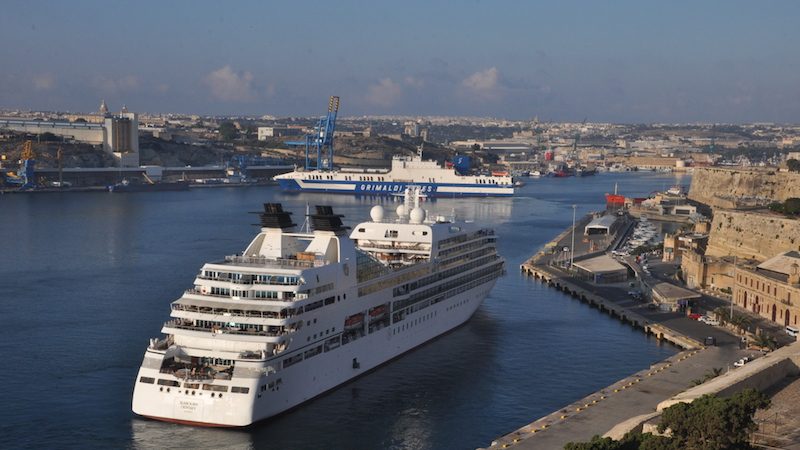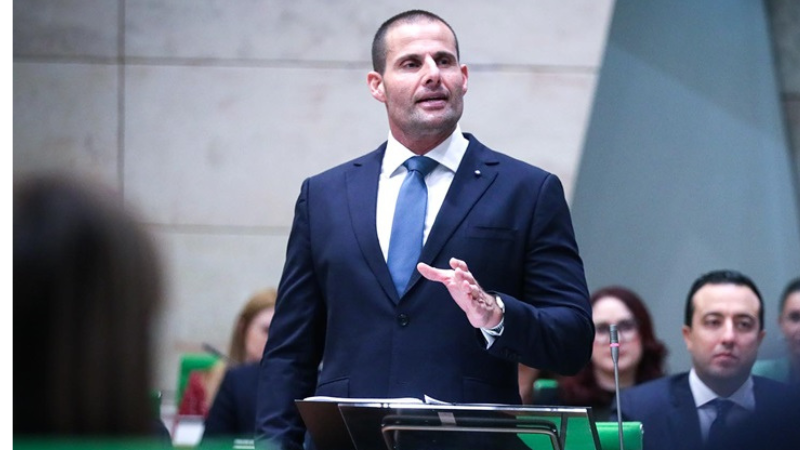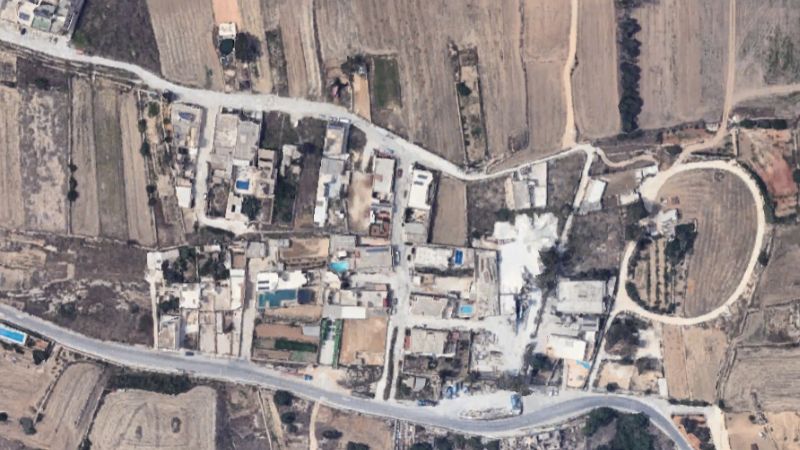A BirdLife Malta study confirmed that the lucrative cruise liner industry is one of the major causes of pollution in Malta.
“We call on the Government to address air pollution from ships in Malta appropriately and take responsibility to be a role model shifting to zero emissions from the shipping sector,” the organisation said on Tuesday.
Populations living in close distance to the port are the most effected by air pollution from ships. However particles are also carried hundreds of kilometers where they contribute to local air quality problems even away from ports.
Figures by the European Commission estimate 50,000 people die prematurely every year in Europe due to air pollution caused by ships.
BirdLife Malta carried out a second air quality measurement exercise on 23 and 24 June, monitoring the arrival and departure of four cruise liners and several smaller ships at the Valletta Grand Harbour as part of our ongoing Together against Air Pollution from Ships project.
The giant ships and thousands of tourists swarming out of them has become an every day sight in Valletta but they generate more than jobs and business activity.
German chemist Axel Friedrich said “ship emissions have an effect on human health diminishing the function of lungs and increasing the risk of cardiovascular disease as well as asthma particularly caused by nitrogen oxides and ultrafine particles”.
Air samples taken opposite to the cruise ship terminal in Senglea showed high concentrations of ultrafine particles and nitrogen dioxide in the presence of cruise liners, passing by and berthing in the port.
Levels of ultrafine particles went up to 110,000 pt/cm³ (particles per cubic centimetre) and nitrogen dioxide volumes up to 135 µg/m³ (microgram per cubic metre) at around 8am during the arrival of one cruise liner and one already berthing at the Valletta Cruise Port.
Another cruise liner departing Valletta around 6pm emitted at its maximum 74,000 pt/cm³ of ultrafine particles and 166 µg/m³ of nitrogen dioxide.
BirdLife Malta said this means that during the summer months where up to seven cruise liners can be catered for at full capacity at the port, these ships contribute to a great extent to the already critical levels of air quality present in Malta.
Nitrogen oxide emissions diminish the function of the lungs and increase the risk of cardiovascular disease. Nitrogen oxide is also a powerful greenhouse gas causing climate warming due to its contribution in the formation of ozone. High concentrations of ozone in cities is responsible for the death of elderly people and people with poor health conditions.
Emissions of sulphur oxides such as sulphur dioxide are harmful for our environment, not least because it causes acid rain which leads to the eutrophication of soils and coastal areas and it damages buildings and structures, particularly those made of limestone.
Among other data, Air Quality Index estimates published by the European Environment Agency at the beginning of 2018, rate Malta’s air quality as very poor.
How can emissions be reduced?
The EU’s Environmental Implementation Report on Malta published last year, shows that health-related external costs from air pollution are above €182 million a year and 44,000 work days are lost each year due to sickness leave related to air pollution. These costs are covered under public funded health care.
Experts have long called for political measures such as the reduction of sulphur dioxide and nitrogen dioxide emissions by establishing so-called emission control areas (ECAs) and the creation of national tailor-made policy frameworks, such as Emission Control in Malta’s national waters.
Additionally, technical measures can be implemented, such as the installation of diesel particulate filters (DPF) on all cruise and ferry ships berthing in Malta, which reduce soot emissions almost completely.
Other measures include selective catalytic reduction systems (SCRs) which eliminate most of the nitrogen oxides from ships exhaust fumes and promoting the use of Liquefied Natural Gas (LNG) which reduces the emissions of sulphur dioxide and PM emissions by up to 99% and of nitrogen oxides by up to 80% for some ships, however, the positive balance in terms of air pollution can be counteracted by escaping methane which is even more harmful then air pollution from the usage of heavy fuel oil.












